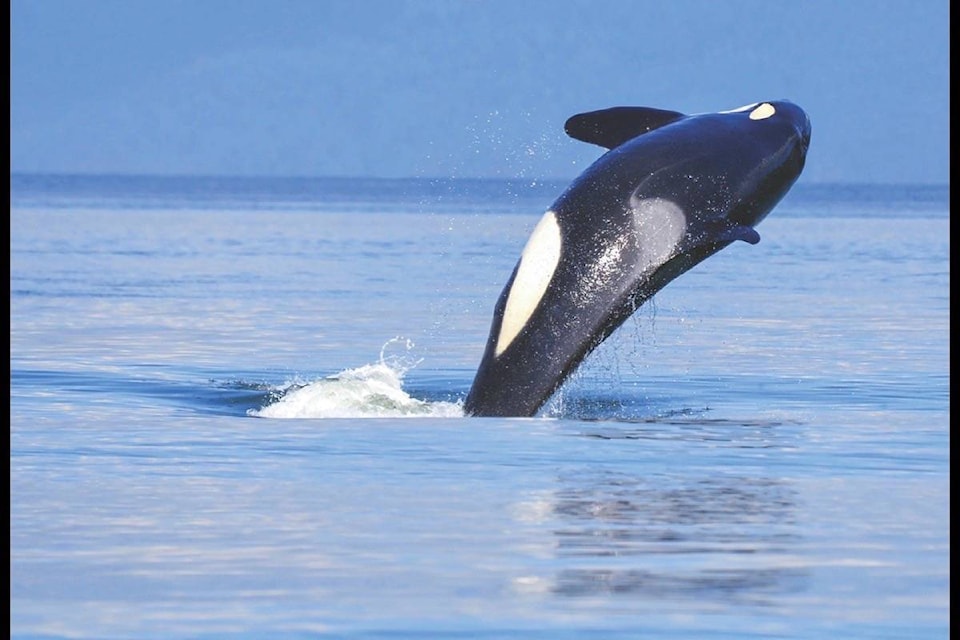The recent decision by the Vancouver Park Board to ban the Vancouver Aquarium from bringing in new dolphins and whales for their marine exhibits and shows for ethical reasons should be commended.
The cramped aquarium pools are not natural environments for these highly intelligent marine mammals who usually have the length and breadth of the world’s oceans to live and frolic in.
My first encounter with killer whales was many years ago in a marine park near Toronto.
Two of them were in one of those large pools with glass for walls so you could see the orcas (another name for the whales) under the water.
They performed their stunts for the crowds admirably, but I wondered at the time just how happy such creatures can be living in these conditions and working all their lives to please a bunch of human trainers.
The answer to that question came in the form of Tilikum, the killer whale that killed three of his trainers over his lifetime.
The tragic tale of Tilikum began in 1983 when the young orca was plucked from his ocean home near Greenland and sent to be trained for the crowds at North America’s many marine attractions.
I gather he never appreciated the treatment and gradually built up a huge resentment for the small, two-legged creatures that kept him captive.
He ended up killing three of them in separate incidents, including one in Victoria’s Sealand of the Pacific, before he tragically died of natural causes earlier this year in a Florida aquarium, miles from his home in the deep blue sea.
Despite their name, it’s a fact that “killer” whales have never been known to kill a human in the wild.
As a kayaker years ago, I had my share of experiences with orcas in the Strait of Georgia, where there’s a mix of family, fish-eating pods and individual transients who hunt other marine mammals, like seals and sea lions.
Once, a group of friends joined me in a quick kayak trip to Maude Island, which is a small island in the mouth of Nanoose Bay, just off of Lantzville.
The island has a small bay with a beach where we hit shore and immediately went swimming in our black wet suits.
I remember one of my friends, a visiting American, asked me as we sat on the water’s edge after our swim if I had ever seen a killer whale in the area.
I said that, up to this time, I had not, but it was a fact that the waters of the strait are full of killer whales.
No sooner had I said this when I noticed what I first thought to be a black sail coming around the bend of the bay and heading towards the beach.
My friends were initially as bewildered by what we were seeing as I was, but then it became frighteningly apparent what was happening when the large killer whale, which was much larger than anything I had ever seen in a marine park, started to rush the beach where we were sitting.
We jumped up and ran for the hills in the off chance that the huge creature would grow legs and start chasing us around the small island.
But the whale suddenly stopped its charge, seemed to stare at us and then backed up, slipped around the bend and disappeared.
I told the story to John Ford, a marine mammal specialist at Nanaimo’s Pacific Biological Station, a few days later and he said it’s likely that the whale thought he saw a bunch of black-coated animals on the beach from a distance and assumed we were seals.
Ford said that when the whale realized what we were, or weren’t, it broke off the attack.
That’s when I first learned that there has never been a documented case of a killer whale killing a human in the wild.
I’d like to think that’s because they recognize us as fellow sentient beings who should be respected and left alone, as they want to be, but it’s likely just because we’re far too skinny and bony to be considered a satisfactory food source.
Whatever the reason, we’re lucky to have such spectacular creatures living peaceably side by side with us in their natural habitat.
If people want to see them, then that’s where they should go.
